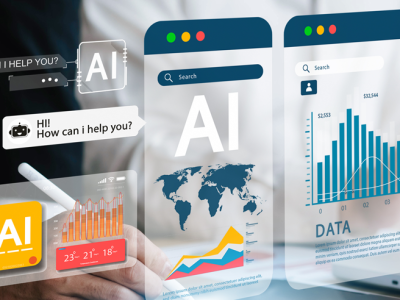SCU Leavey Blog
A postgraduate business degree can position you to transform organizations—but with so many options available, which path is right for you?
When you’re at a career crossroads and in a competitive job market, a master's degree is often exactly what you need to help you reposition yourself.
Learn about the average cost of an online MBA, covering tuition and hidden expenses. Learn tips for reducing costs through financial aid and scholarships.
Discover how modern businesses use artificial intelligence and machine learning to forecast, prevent fraud, and personalize customer experiences.
Learn key techniques in statistical modeling to enhance your data analysis skills. Discover practical approaches for effective decision-making.
Learn about some of the top business intelligence and data analytics software that businesses today are using to gain insights and boost performance.
Discover how artificial intelligence is revolutionizing data analytics and deepening insights while also presenting new challenges.
Discover ethical decision making examples and the key factors that influence choices in business. Learn how to make confident, values-driven decisions.
This practical guide offers essential steps to navigate changes, manage uncertainty, and adapt effectively in a company restructuring.
Understand the ethical principles, GAAP, IFRS, and auditing standards that govern accountants. Learn more from the Leavey School of Business.
Examine ethical dilemmas in various industries, including conflicts of interest and data privacy, while understanding the factors that influence them.
Compare marketing analytics vs. business analytics to see which career aligns with your interests, strengths, and future opportunities.
Learn about corporate restructuring and how it works. Understand its impact on employees and why it's crucial for business success.
As finance teams integrate more closely with data science, IT, and analytics departments, professionals find themselves working on cross-functional initiatives. Explore how SCU’s Online MSFA program prepares leaders for AI-driven finance and strategic decision-making in a digital economy.
Explore 10 business analyst projects that demonstrate real-world skills, practical experience, and portfolio-ready insights.
Master budgeting and forecasting with techniques, examples, and modern tools. Learn how to create accurate financial projections for your business.
Learn how SCU’s Online MSBA equips professionals to apply AI for ethical, data-driven business strategies.
Explore how Santa Clara University’s Online MBA prepares leaders for a future dominated by AI, data-driven strategies, and digital platforms.
Generative AI is a defining force in the next era of business analytics. Explore the Online MSBA program from the Leavey School of Business at Santa Clara University to see how you can gain the skills to lead responsibly in an AI-driven business world.
Discover how SCU’s Online MBA builds leaders fluent in AI and emotional intelligence, skills top employers demand in today’s business world. Start your journey towards leadership success with SCU's Online MBA program.




















